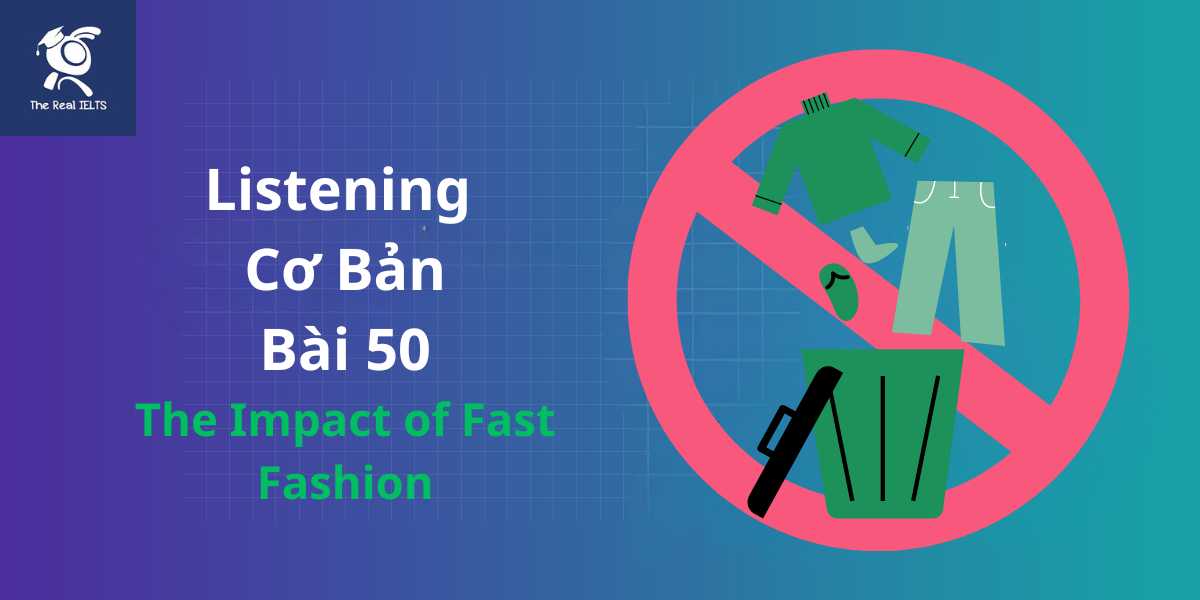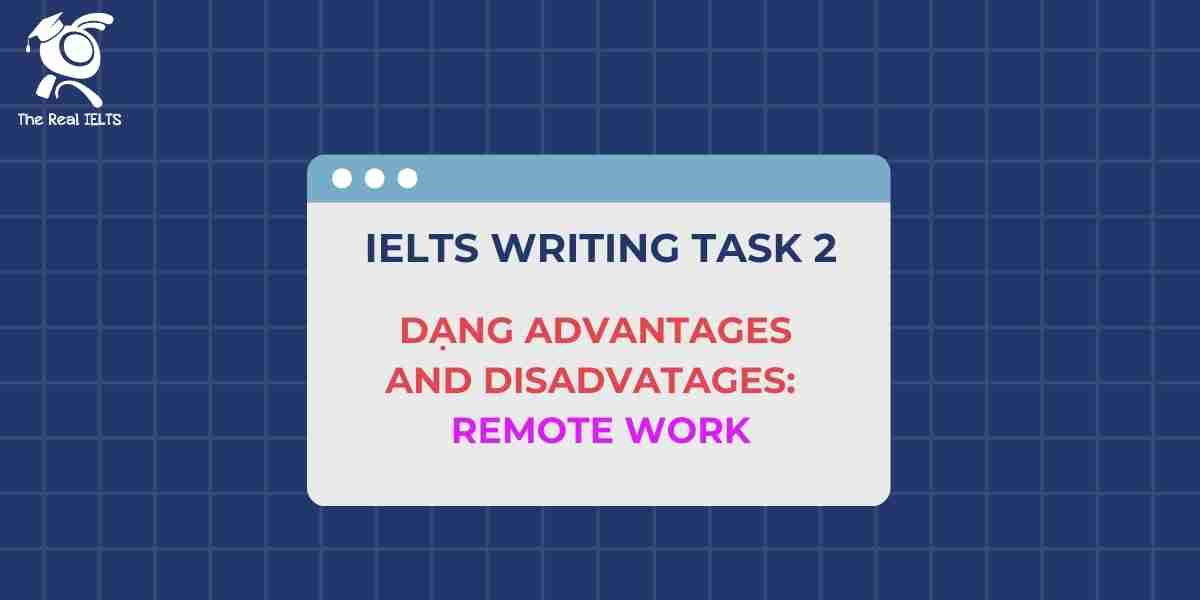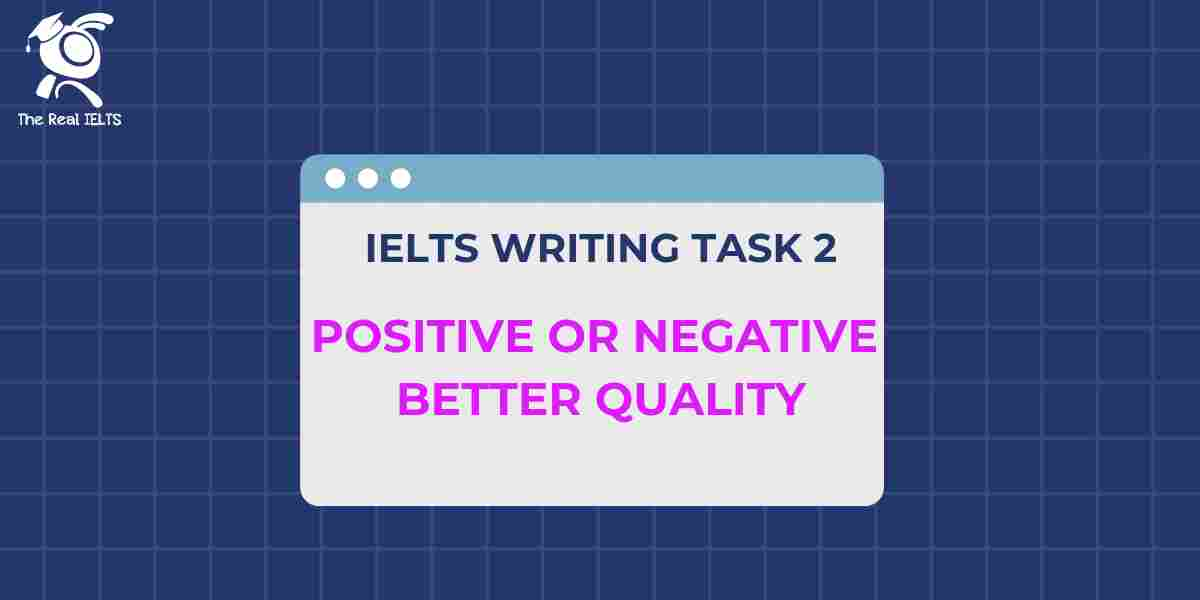Thời trang nhanh hay còn gọi là thời trang mang tính thời vụ có những tác động gì vào xã hội và kinh tế? Bài Listening này ngoài việc tập luyện cũng cung cấp thêm một số thông tin và kiến thức cho bạn. Hãy nghe thật kỹ để trả lời câu hỏi luyện tập.
Bài Listening
Questions
Part 1: Introduction to Fast Fashion
What is the primary characteristic of fast fashion?
- A) Expensive clothing
- B) Slow production
- C) Rapid production
- D) High-quality materials
Which of the following is NOT mentioned as a consequence of fast fashion?
- A) Increased textile waste
- B) Improved working conditions
- C) Environmental pollution
- D) Cheap labor in developing countries
What drives the demand for fast fashion according to the passage?
- A) Availability of high-quality materials
- B) Inexpensive prices and latest trends
- C) Long production cycles
- D) Ethical manufacturing practices
Part 2: Environmental Impact
What is one major environmental impact of fast fashion mentioned in the passage?
- A) Reduction in carbon emissions
- B) Microplastic pollution
- C) Decrease in textile waste
- D) Sustainable fabric production
Why do synthetic fibers like polyester contribute to environmental issues?
- A) They are biodegradable.
- B) They decompose quickly.
- C) They are derived from fossil fuels and contribute to microplastic pollution.
- D) They are made from recycled materials.
How long can discarded clothing take to decompose in landfills?
- A) A few months
- B) Several years
- C) Hundreds of years
- D) A decade
Part 3: Social Impact
Where do fast fashion companies often source their labor?
- A) Developed countries
- B) Developing countries
- C) Local markets
- D) High-cost labor markets
What are some of the working conditions mentioned for employees in fast fashion factories?
- A) High pay and short hours
- B) Long hours, low pay, and unsafe environments
- C) Comfortable workspaces and good benefits
- D) Flexible schedules and health insurance
What is a major ethical concern in fast fashion related to children?
- A) Lack of education opportunities
- B) Child labor
- C) High wages for young workers
- D) Limited job prospects
Part 4: Solutions and Alternatives
What is one strategy mentioned to promote sustainable fashion?
- A) Using synthetic fibersB) Reducing water and energy consumptionC) Increasing production speedD) Lowering wages
What does the concept of slow fashion encourage?
- A) Buying more itemsB) Purchasing fewer, higher-quality itemsC) Rapid consumptionD) Following every fashion trend
How can second-hand shopping contribute to solving the fast fashion problem?
- A) By increasing the demand for new garmentsB) By minimizing waste and reducing the need for new clothingC) By promoting disposable fashionD) By lowering the quality of available clothing
Answers
Part 1:
- C) Rapid production
- B) Improved working conditions
- B) Inexpensive prices and latest trends
Part 2:
- B) Microplastic pollution
- C) They are derived from fossil fuels and contribute to microplastic pollution.
- C) Hundreds of years
Part 3:
- B) Developing countries
- B) Long hours, low pay, and unsafe environments
- B) Child labor
Part 4:
- B) Reducing water and energy consumption
- B) Purchasing fewer, higher-quality items
- B) By minimizing waste and reducing the need for new clothing
Audio Script
Part 1: Introduction to Fast Fashion
Fast fashion is a term used to describe the rapid production of inexpensive clothing by mass-market retailers in response to the latest trends. This model allows consumers to purchase new styles quickly and at low prices, but it also has significant environmental and social impacts. Fast fashion often relies on cheap labor in developing countries, leading to poor working conditions. Additionally, the fast-paced production cycle results in large amounts of textile waste and pollution.
Part 2: Environmental Impact
The environmental impact of fast fashion is profound. The industry is responsible for a significant portion of global carbon emissions due to the energy-intensive processes involved in fabric production, dyeing, and finishing. Additionally, the use of synthetic fibers like polyester, which are derived from fossil fuels, contributes to microplastic pollution in oceans and water bodies. Furthermore, the sheer volume of discarded clothing that ends up in landfills exacerbates the problem, as these materials can take hundreds of years to decompose.
Part 3: Social Impact
Interviewer: Today, we’re talking with Sarah Johnson, an expert on labor rights in the fashion industry. Sarah, can you tell us about the social implications of fast fashion?
Sarah: Certainly. Fast fashion often relies on factories in developing countries where labor costs are low. Unfortunately, this often means poor working conditions for employees, who may work long hours for very little pay in unsafe environments. Child labor is also a concern in some regions. Moreover, the pressure to produce large quantities of clothing quickly can lead to exploitation and neglect of workers’ rights.
Part 4: Solutions and Alternatives
To address the negative impacts of fast fashion, several solutions have been proposed. One approach is to promote sustainable fashion, which focuses on environmentally friendly practices and ethical labor standards. This includes using organic or recycled materials, reducing water and energy consumption, and ensuring fair wages and safe working conditions. Another solution is the concept of slow fashion, which encourages consumers to buy fewer, higher-quality items that last longer. Additionally, second-hand shopping and clothing rental services can help reduce the demand for new garments and minimize waste.
Học lại bài cũ: Bài tập Listening 49: The Future of Work and Automation.















